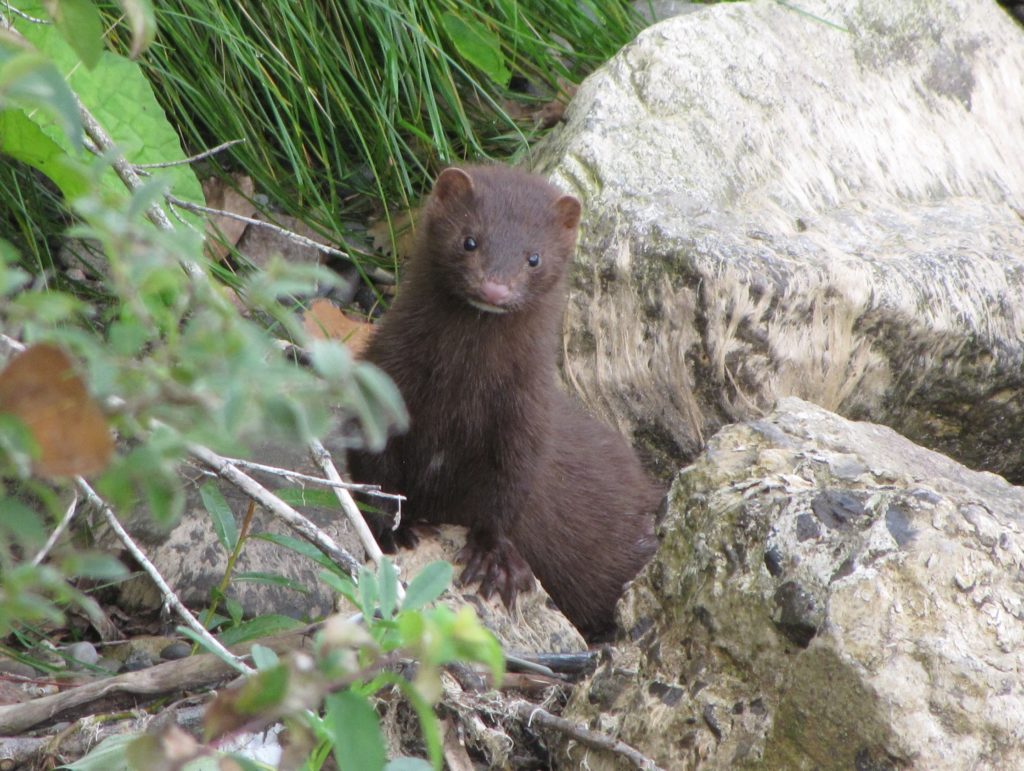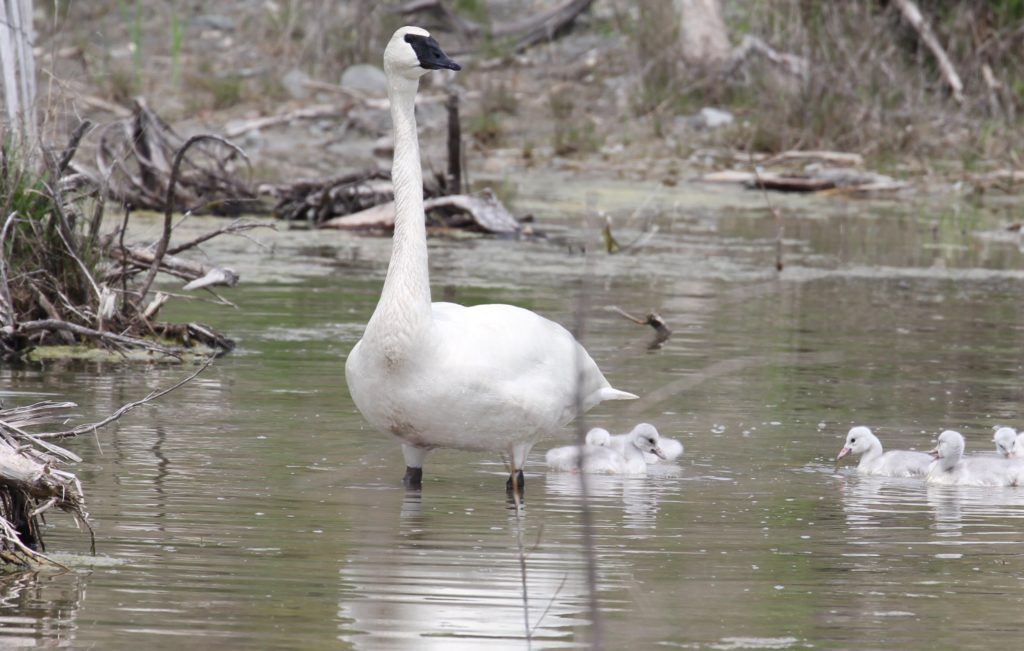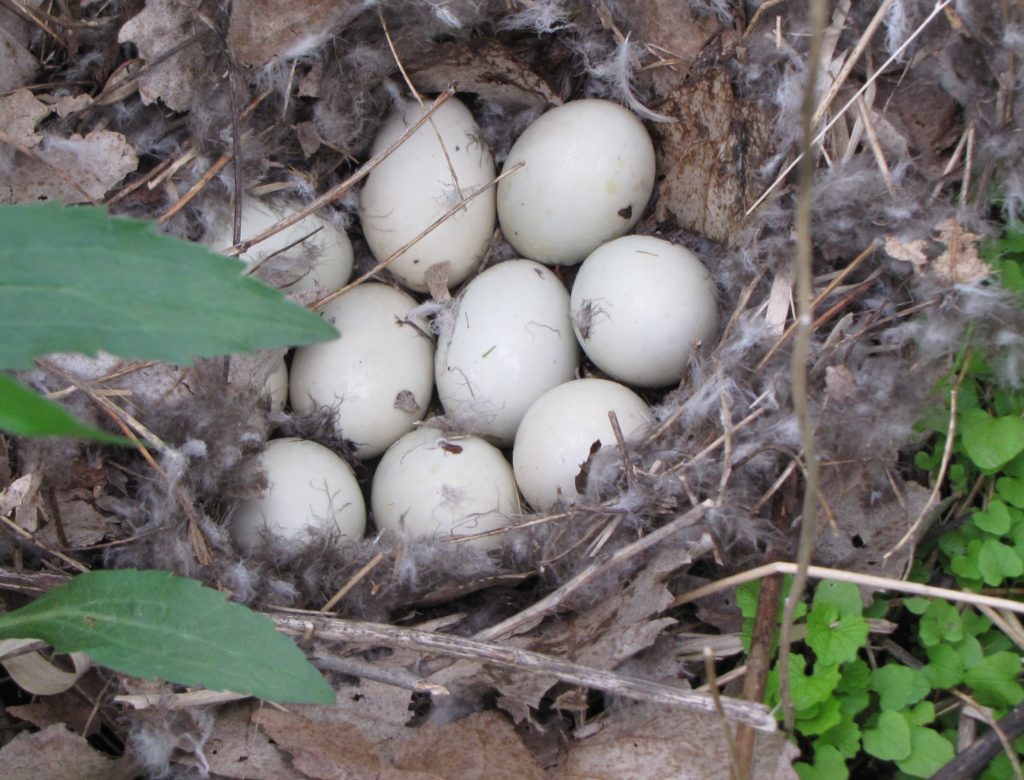Walking on the Leslie Street Spit last week, I came upon a pair of Canada Geese. They were belligerent. Hissing and blocking the path, they refused to let me pass. I soon saw why. A gosling sat in the weeds just off the path, and the parent birds wanted to protect it from me.

The goslings are attractive in a way the mature birds can’t match, the plumage a glowing shade of yellow and the feathers all soft and fuzzy. I’m tempted to call them cute, but if I dig down past the cliché to get at the root of their appeal, I think it must lie in their vulnerability, that they’re only a hair’s breadth away from death. The bird in front of me was by itself, the sole survivor of a hatch that probably consisted of half-a-dozen birds. What happened to the others? Eaten by Mink, which are everywhere on the Spit, or by Snapping Turtles or Herring Gulls or Raccoons. No wonder the parents were so solicitous. This ball of fluff with the placid, trusting expression in its eyes was all that remained of their brood, all they had to show for the month the female spent incubating her eggs.

This encounter reminded me of why I enjoy birding in the summer, the season when many birders hang up their binoculars and find other things to do. Summer may lack the great rush of migrants that blow through Toronto in the spring and the fall, and for the most part it lacks the raptors—the hawks and owls and eagles—that populate parts of the city in winter. But what it has that the other seasons lack is nesting birds, which are often birds at their most brightly colored and with some kind of story to tell.
The Trumpeter Swan, the largest waterfowl species in Canada, also nests on the Spit. The contrast between the adult bird, which can weigh up to 35 lbs. and has a wingspan of seven feet, and the just-hatched cygnets is striking. The swan stands guard with the presence of a knight in armor, but a knight with its neck stretched out to the max—like some feathered Alice on the other side of the looking glass—while the young birds feed heedlessly nearby. They fear nothing in the presence of such a parent, and with a giant like that to protect them, why should they? At what age will their own necks start to unwind, to periscope upwards like those of their parents?

The amazing thing about the Mallards that nest throughout the Spit is where they place their nests—anywhere, apparently, including grassy areas just off the Spine Road—and how full they pack them with eggs, an average of 10 but there can be as many as 15. Not so much safety in numbers as playing the numbers, desperately gambling that a fraction of the whole will squeeze through to maturity.

Generally speaking, nesting season is when birds are on their worst behavior, at least in relation to human beings. Red-winged Blackbirds are notorious for attacking anyone who approaches the nest or even enters their territory—an ill-defined space that seems to expand and contract depending on the mood and energy level of the bird in question. In the rush to escape what amounts to a flying dagger, we forget how beautiful these birds can look at rest. They give a new meaning to the word black, and when I say black, I mean jet-black, the rich blackness of coal dug up from deep in the earth. The males have nothing but a chevron of red and white to provide contrast and set off the black to its best advantage. This inky plumage reminds us of the profundity of darkness, of the depth it can convey. I catch myself thinking that if I ever handled one of these birds, it would be like handling carbon paper or a printer cartridge—my hands would come away stained but in this case with a black so deep and penetrating it would never wash away.

The Common Tern is another ill-tempered wretch that invades certain areas of the Toronto lakeshore every year in an increasingly frantic search for nesting habitat. In less complicated times, terns laid their eggs right on the beach, but now that beaches are at a premium, they have to improvise. The powers-that-be on the Spit provide rafts for the birds to nest on, which ensures that the terns re-tern there year after year to duplicate themselves. At the opposite end of the spectrum from blackbirds, Common Terns have a plumage that’s not exactly white and not exactly grey but sort of a pearly compromise between the two. They wear a black cap over the head that comes down low enough to obscure their eyes and give them a blinded appearance that their agility in the air contradicts. In flight, they’re beautifully proportioned birds with the angled, swept-back wings of a fighter jet. Even on land, a tern will periodically raise its wings over its head and call out, as if to announce its intention to take off again very soon and reclaim its rightful place in the sky.


Very nice post about the under-rated summer birding season, Ed.
Thanks so much, Barry. There’s more to come on this topic, so stay tuned.